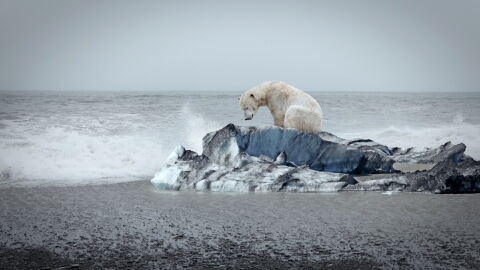The end of an ice age
Discover our latest podcast
People are always talking about climate change nowadays and we all know how it works by now. Its effects are starting to be felt due to the premature arrival of the seasons and the rising temperatures on our European continent, but these changes are still miniscule in comparison to other areas in the world where the effects are clearly a lot more visible and are turning the lives of millions of people upside down.
In the North-east of Russia, there is a huge Siberian region called Yakutia: a former snow-covered, frozen wasteland larger than Argentina. And we say ‘former’ because of the effects of climate change and what the landscape has become over recent years. For several decades and at an increasing rate, the ‘Kingdom of Permafrost’ has lost, little by little, 90% of its permafrost, a layer of ancestral ice which, by disappearing, has brought several areas that had been frozen for thousands of years back to the open air, or turned them into huge flood-prone areas.
Wildlife adapts and hunters suffer
Populations and villages who live in the region and make their living from hunting, fishing and animal breeding, are facing more and more problems as a result. In the far north, not far from Alaska in the town of Srednekolymsk, summer normally lasts from June to September, but is now lasting for several extra weeks. The temperatures in January used to sit around -24°C, but have recently increased spectacularly to around -10°C.
Variations like this have a huge impact on local animal life and patterns, whose migratory movements have changed as a result. The common scoter, a species of duck that used to migrate into the area, generally arrived in June, but since climate change has been affecting the temperatures, they have been arriving around May. Flooding caused by the melting ice has also forced lots of other species to migrate, to the great displeasure of hunters.
This is causing problems for hunters as well, whose basis for their way of life is the cold. For the most part, hunters make the most of the cold temperatures by using caves as storage spaces where they can store meat to keep it fresh. The melting of the ice in these caves and storage spaces is rendering these spaces useless now and forcing hunters to sometimes buy their meat rather than hunting their food.
But the hunters aren’t alone in this: breeders are also affected by these changes and have been forced to replace their herds of cattle for horses for example, which eat less hay but obviously don’t produce as much milk.
Fishing villages have become flooded and residents have been forced to move
The stagnation of melted water and the increased duration of the summer months have sped up how quickly the permafrost melts. Residents who used to live by the water and survived off fishing have had their homes flooded by a mixture of water and mud, creating humid and marshy areas where it has become practically impossible to live, just like in the village of Namlisk where residents had to wade through the water for 5 years and were overrun by mosquitoes. But some fishermen have resisted and are still there despite all this, repairing their homes as best they can, seeing as though their foundations used to be supported by the ice that has since melted, and who are currently suffering from humidity and infiltration.
Traces and evidence of every period in Siberian history
The deterioration of the climate in these areas has caused a completely different world to emerge: the different ages coming together. In museums, Nordic populations can still admire representations of their traveling ancestors crossing the barren, then frozen lands, cohabiting with ancient wildlife. Permafrost melting has since revealed evidence and traces of their past that nature had covered for thousands of years with snow and ice.
Therefore, hunters sometimes dig in search of ivory on the very well-preserved, frozen mammoth carcasses. Ivory is very valuable and can be sold on the market in China for 16,000 dollars per tusk. A few months ago, permafrost was in the news again when a perfectly preserved wolf’s head was discovered that had been frozen for 32,000 years.
Lack of resources for the authorities
Apart from the flooded villages needing to retreat several kilometres back towards the mainland, the authorities don’t seem to have come up with any solutions for this problem. The Permafrost Research Institute, a government organisation, doesn’t seem to have the resources available to measure the advances of the melted ice, nor anticipate the repercussions which are linked to it, such as the release of methane or other ancient microbes that have been trapped in the ice and could potentially be dangerous.
Check out the video to see the disastrous effects!















